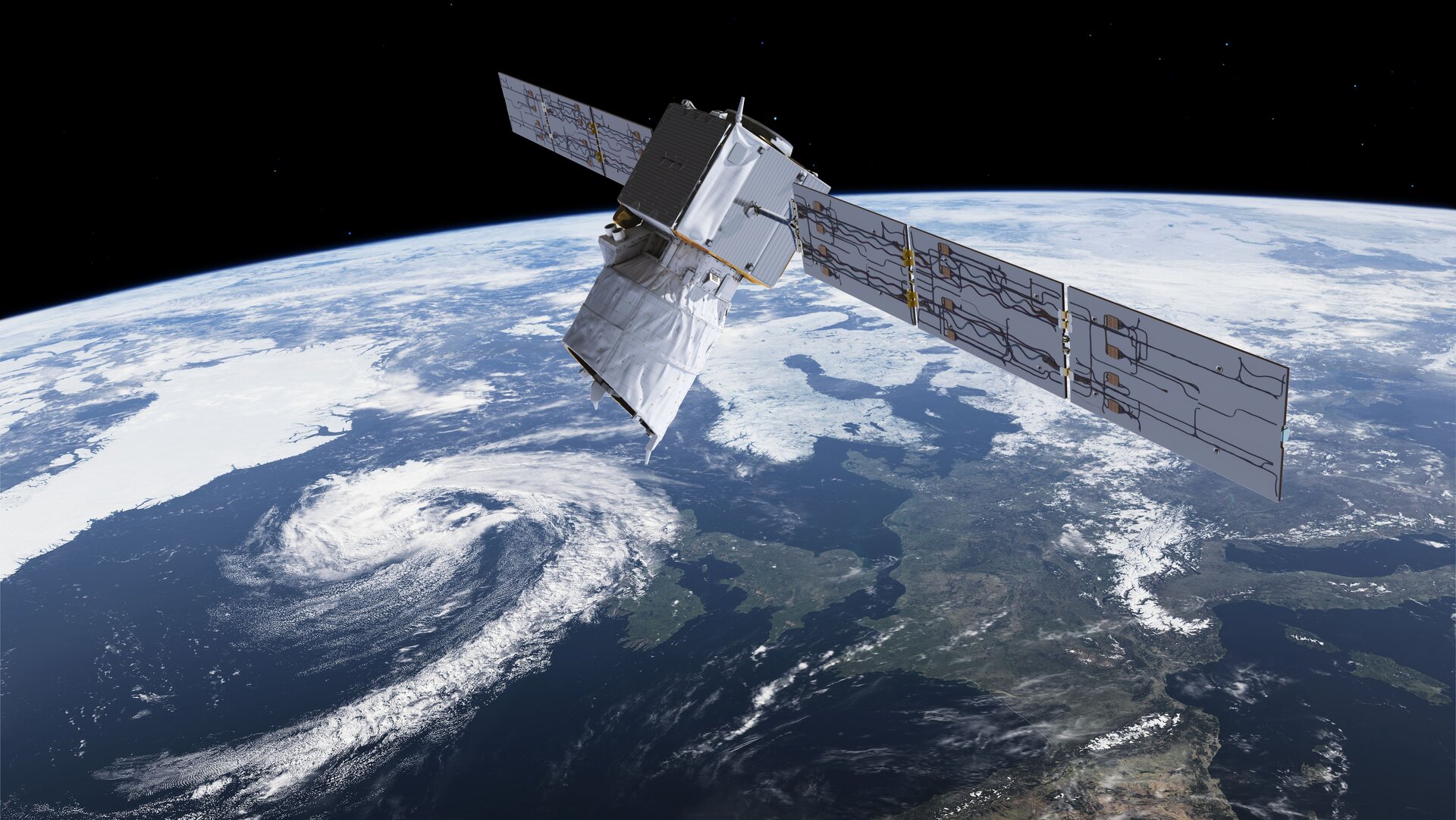
A European satellite is making a first-of-its kind return to Earth this week.
The European Space Agency (ESA) is currently guiding its Aeolus wind-studying satellite down for a controlled destruction in Earth's atmosphere. This strategy is a major shift for Aeolus, whose original end-of-life plan called for an unguided fall.
It's also a milestone moment in spaceflight: No satellite has been deorbited in such an "assisted" fashion before, according to ESA. (Such maneuvers are common for rocket stages, which often steer themselves to safe reentries over the open ocean.)
Here's what you need to know about Aeolus and its reentry campaign, which is expected to end with the spacecraft's fiery destruction on Friday (July 28).
Related: Kessler Syndrome and the space debris problem
What is Aeolus?
The 3,000-pound (1,360 kilograms) Aeolus launched in August 2018 on a groundbreaking mission to study Earth's winds, which had never been monitored in detail from space.
The spacecraft carries just one scientific instrument — a Doppler wind lidar (short for "light detection and ranging"), whose observations have helped scientists improve their weather forecasts and climate models, according to ESA.
Get the Space.com Newsletter
Breaking space news, the latest updates on rocket launches, skywatching events and more!
Aeolus measured winds from a sun-synchronous orbit 200 miles (320 kilometers) above Earth. That's relatively low; for example, the International Space Station zooms around our planet at an average altitude of about 250 miles (400 km).
The spacecraft's mission was slated to last three years. Aeolus outlasted its warranty considerably, but its time is now almost up. The spacecraft is running low on fuel, which is why ESA is bringing it down now.
Why is Aeolus being guided down to Earth?
Satellites typically fall back to Earth uncontrolled when their missions are done, dragged ever lower by our planet's atmosphere, which thickens as altitude decreases.
That was the original disposal plan for Aeolus as well. But the mission team decided to change course — because they had the capability to do so (they reserved enough fuel for the required maneuvers), and because it seemed the more responsible route.
In general, around 20% of a spacecraft's mass survives the fiery trip through Earth's atmosphere. Every uncontrolled fall therefore presents a risk, however slight, of injury and damage to infrastructure on the ground.
ESA and the Aeolus team wanted to reduce that risk — and to set an example for other satellite operators to follow.
"Aeolus' reentry, and ESA's desire to reduce the risk in line with current guidelines, sets a new precedent for safe spacecraft operations and sustainable spaceflight, for both future missions and those already in orbit," ESA's Rosa Jesse wrote in a blog post last month.
When and where is Aeolus coming down?
Aeolus has been falling from its operational altitude since June 19. The satellite performed its first major reentry maneuver on Monday (July 24), firing its thrusters twice for a total of 37.5 minutes in burns that reduced its altitude by about 19 miles (30 km), to 155 miles (250 km), ESA's Rosa wrote in an update on Monday.
Four more burns are scheduled to take place on Thursday (July 27), lowering the orbit further. On Friday (July 28), "a final command will guide Aeolus home from an altitude of 150 km to just 120 km [93 to 75 miles]. Then, the satellite will reenter," Rosa added in Monday's post.
Reentry is expected to occur over the Atlantic Ocean about five hours after the final maneuver, mission team members have said.
It's too soon to pinpoint the reentry location; detailed forecasts likely won't be made until after the final maneuver on Friday. We therefore don't know which cities and towns will be close enough to the reentry path to perhaps get a glimpse of the satellite's fiery death dive. But stay tuned: We'll give you those updates as ESA and the Aeolus team provide them.
Join our Space Forums to keep talking space on the latest missions, night sky and more! And if you have a news tip, correction or comment, let us know at: community@space.com.

Michael Wall is a Senior Space Writer with Space.com and joined the team in 2010. He primarily covers exoplanets, spaceflight and military space, but has been known to dabble in the space art beat. His book about the search for alien life, "Out There," was published on Nov. 13, 2018. Before becoming a science writer, Michael worked as a herpetologist and wildlife biologist. He has a Ph.D. in evolutionary biology from the University of Sydney, Australia, a bachelor's degree from the University of Arizona, and a graduate certificate in science writing from the University of California, Santa Cruz. To find out what his latest project is, you can follow Michael on Twitter.









